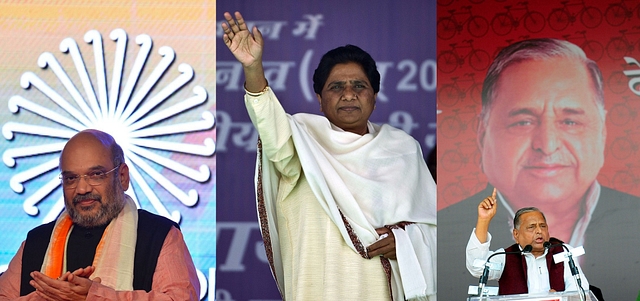
#UP2017: What If UP Was Divided Into Four States ?
How would politics in the state play out if it was divided into four?
A poll survey on Uttar Pradesh conducted in March predicted the Bahujan Samaj Party (BSP) winning 63 of the 142 seats in the poverty-stricken Poorvanchal, just one seat behind the Bharatiya Janata Party’s (BJP) projected tally of 64.
In the present assembly, the BSP has only 23 legislators from Poorvanchal, while the Samajwadi Party (SP) has 84, the BJP 16 and the Congress 11. Independents and others account for the remaining eight. With those numbers, Poorvanchal would have been under the rule of the SP with someone from Mulayam Singh Yadav’s family heading the state.
It is only natural that it be Poorvanchal where an intense battle is fought between the four major parties. The BJP started its poll campaign here with Prime Minister Narendra Modi himself addressing a rally. Sonia Gandhi’s road show in the PM’s constituency Varanasi created quite a stir. Although the Congress president took ill because of the heat and dust, her road show was described as impressive.
Not to be left behind, Mayawati too chose Poorvanchal’s Azamgarh district to launch her campaign targeting Mulayam and Modi. For her, Mulayam and his party are bigger adversaries than Modi and company, even though the BJP is trying hard to nibble away her vote bank. Will eastern UP’s Muslims and Dalits help Mayawati stage a comeback and keep the BJP out? Or will the other backward castes, Brahmins and Thakurs come together to help BJP gain power ?
In the prosperous Pashchim Pradesh, or western Uttar Pradesh, which the Rashtriya Lok Dal (RLD) wants to be renamed Harit Pradesh, the BSP was shown to be way ahead of its rivals with 80 out of the 145 seats at stake. The figure is almost double the party’s present representation from the region – 43, compared to SP’s 80. This would be a reversal of 2012 numbers from the region and would depend largely on Muslims, who could join forces with Dalits to prevent the BJP, which has 25 legislators from the region, from coming to power. However, the BJP is doing its bit to woo Dalit voters.
Imagine these two regions to be independent states, the demand for which was made by Mayawati in 2011. In that case, her party would be looking at the prospect of forming a government in one and being within touching distance of power in the other.
Even in Awadh Pradesh, comprising Lucknow, her party was shown to lead others with 31 of the 63 seats at stake. Bundelkhand too, the survey predicted, would vote for the BSP. The survey predicted 11 of the 19 seats in the region for Behenji’s party against its present strength of seven.
The picture is bound to change as the election draws near. However, in the assembly elections, the SP and the BSP have managed to keep the BJP out since 2002 by rotation. If the early poll survey for 2017 gives advantage to the BSP, in the 2012 elections it was the SP which emerged as the dominant force.
Which way would the regional sentiment and Hindutva ideology influence the voters mind remains to be seen. Despite winning 84 seats from Poorvanchal, the SP government has not been able to create jobs for the people in the region or revive industry, and it remains the most poorly-governed part of the state across all parameters.
It is this weak plank of Akhilesh government which Narendra Modi and other BJP leaders are attacking by promising more jobs and better living conditions to the people.
Hypothetically redrawing the map of the state at this stage could see interesting results if elections were to be held simultaneously. First of these would be the role and say of smaller parties like RLD in government formation. Like the Jharkhand Mukti Morcha in Jharkhand, Poorvanchal could see growth of some new political outfits.
But all that is future’s realm. At this point in time BJP has two tough opponents to contend with. The year 2017 may not be the same as 2014.
Also Read:
Why BJP Needs To Have A Face For Uttar Pradesh Elections
BJP Sets In Motion Its Plan For Eastern Uttar Pradesh
Uttar Pradesh Polls: Winning Formula Eludes BJP